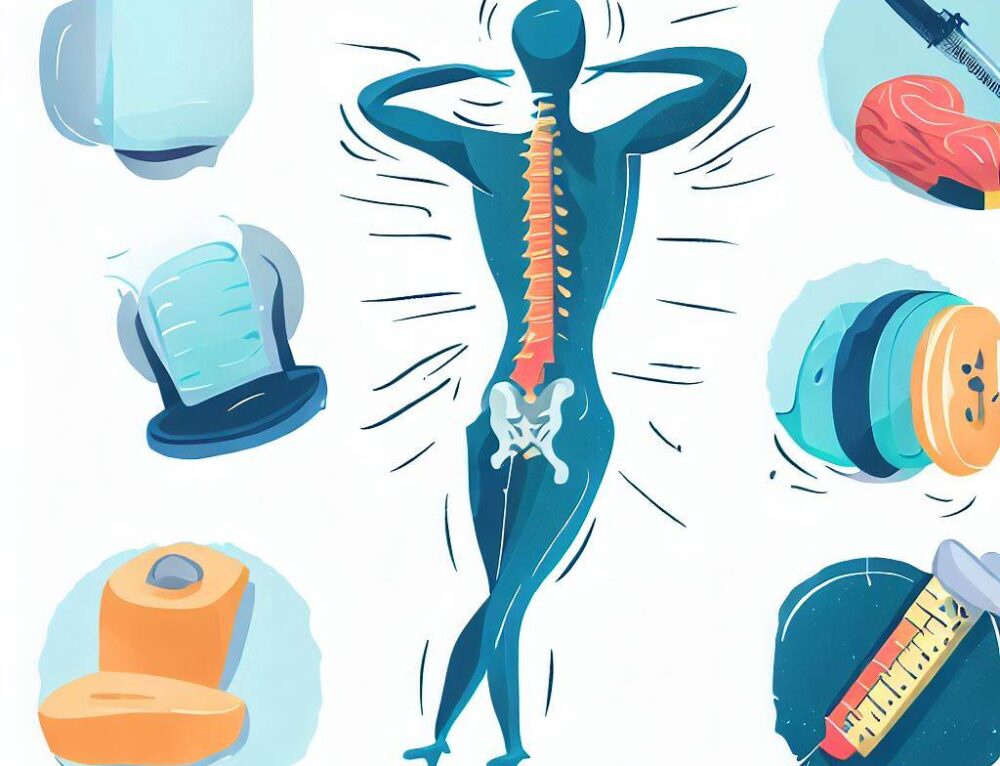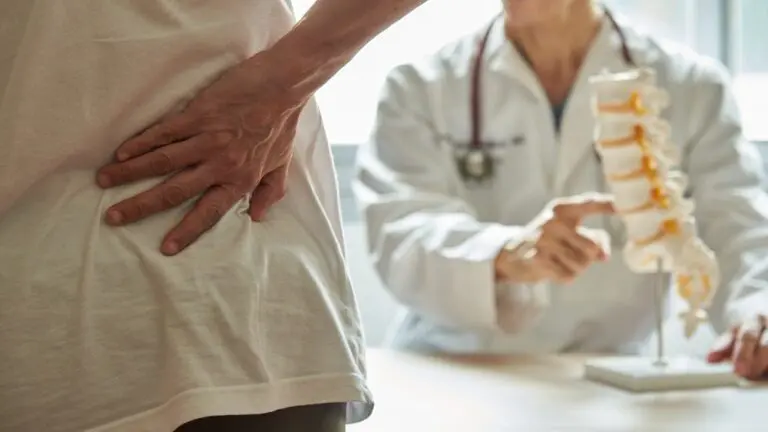Scoliosis is a condition characterized by an abnormal curvature of the spine, which can lead to pain, discomfort, and limited mobility. While the exact cause of scoliosis is often unknown, there are various factors that can contribute to its development. One such factor is trauma or injury. In this article, we will explore the relationship between trauma and scoliosis, examining how injuries can potentially influence the development of this condition.

Understanding Scoliosis
Before delving into the impact of trauma on scoliosis, it is important to have a basic understanding of the condition itself. Scoliosis is typically diagnosed during adolescence, although it can also develop in adulthood. It affects both males and females, with females being more likely to require treatment. The curvature of the spine in scoliosis can range from mild to severe, and it can be classified into different types based on its cause and age of onset.

Types of Scoliosis
There are several types of scoliosis, including idiopathic scoliosis, congenital scoliosis, neuromuscular scoliosis, and degenerative scoliosis. Idiopathic scoliosis is the most common type and has no known cause. Congenital scoliosis is present at birth and is caused by abnormal spinal development in the womb. Neuromuscular scoliosis is associated with conditions such as cerebral palsy or muscular dystrophy. Degenerative scoliosis occurs in older adults due to the natural degeneration of the spine.

Causes of Scoliosis
While the exact cause of most cases of scoliosis remains unknown, there are several factors that are believed to contribute to its development. These include genetic factors, hormonal imbalances, and neuromuscular conditions. Trauma and injury are also considered potential causes of scoliosis, particularly in cases where the injury affects the spine directly.
Trauma and Injury as Potential Causes
Trauma and injury can potentially cause scoliosis by disrupting the normal alignment of the spine. When the spine experiences a significant force or impact, such as in a car accident or a fall, the vertebrae can become misaligned or fractured. This can lead to an abnormal curvature of the spine, resulting in scoliosis. However, it is important to note that not all injuries will lead to scoliosis, and the relationship between trauma and scoliosis is still not fully understood.
Impact of Trauma on Spinal Alignment
Trauma can have a significant impact on the alignment of the spine. Injuries such as fractures, dislocations, or ligament tears can disrupt the normal structure of the spine, leading to instability and potential curvature. The severity of the trauma and the location of the injury can determine the extent of the spinal misalignment and the subsequent development of scoliosis.
Sports Injuries and Scoliosis
Sports injuries, particularly those involving high-impact activities or contact sports, can potentially contribute to the development of scoliosis. For example, a football player who sustains a spinal injury during a tackle may experience a misalignment of the vertebrae, leading to scoliosis. However, it is important to note that not all sports injuries will result in scoliosis, and the relationship between sports injuries and scoliosis is still being studied.
Car Accidents and Scoliosis
Car accidents can cause significant trauma to the spine, potentially leading to scoliosis. The force of impact during a collision can cause fractures, dislocations, or other injuries to the vertebrae, resulting in spinal misalignment. Studies have shown that car accidents can be a potential cause of scoliosis, particularly in cases where the impact is severe.
Falls and Scoliosis
Falls, especially from a height or with significant force, can also contribute to the development of scoliosis. When an individual falls and lands on their back or experiences a jarring impact, the spine can be subjected to excessive pressure or trauma. This can lead to spinal misalignment and the subsequent development of scoliosis. Falls are particularly concerning in children and adolescents, as their spines are still developing and more susceptible to injury.
Recognizing Scoliosis Symptoms After Injury
After experiencing trauma or injury, it is important to be vigilant for any signs or symptoms of scoliosis. These can include uneven shoulders, a prominent shoulder blade, an uneven waistline, or leaning to one side. Back pain, muscle stiffness, and limited range of motion may also be present. If any of these symptoms are observed following an injury, it is crucial to seek medical attention for a proper diagnosis and treatment.
Treatment Options for Trauma-Induced Scoliosis
The treatment for trauma-induced scoliosis will depend on the severity of the spinal misalignment and the individual’s overall health. In mild cases, conservative treatments such as physical therapy, bracing, and pain management may be recommended. In more severe cases, surgery may be necessary to correct the curvature and stabilize the spine. The goal of treatment is to alleviate pain, improve function, and prevent further progression of the scoliosis.
Conclusion
While the exact relationship between trauma and scoliosis is still not fully understood, there is evidence to suggest that injuries can potentially contribute to the development of this condition. Trauma, such as sports injuries, car accidents, or falls, can disrupt the alignment of the spine, leading to scoliosis. It is important to recognize the symptoms of scoliosis after an injury and seek appropriate medical attention for diagnosis and treatment. By understanding the potential impact of trauma on scoliosis, healthcare professionals can provide better care and support for individuals affected by this condition.
References
- Weinstein SL, Dolan LA, Cheng JC, et al. “Adolescent idiopathic scoliosis.” Lancet. 2008;371(9623):1527-1537. doi: 10.1016/S0140-6736(08)60658-3
- Negrini S, Donzelli S, Aulisa AG, et al. “2016 SOSORT guidelines: Orthopaedic and rehabilitation treatment of idiopathic scoliosis during growth.” Scoliosis and Spinal Disorders. 2018;13:3. doi: 10.1186/s13013-018-0175-8
- Trobisch P, Suess O, Schwab F. “Idiopathic scoliosis.” Dtsch Arztebl Int. 2010;107(49):875-883. doi: 10.3238/arztebl.2010.0875
- Hresko MT. “Clinical practice. Idiopathic scoliosis in adolescents.” N Engl J Med. 2013;368(9):834-841. doi: 10.1056/NEJMcp1209063
- Bettany-Saltikov J, Weiss HR, Chockalingam N, et al. “Surgical versus non-surgical interventions in people with adolescent idiopathic scoliosis.” Cochrane Database Syst Rev. 2015;2015(4). doi: 10.1002/14651858.CD010663.pub2
- Lonstein JE, Carlson JM. “The prediction of curve progression in untreated idiopathic scoliosis during growth.” J Bone Joint Surg Am. 1984;66(7):1061-1071. doi: 10.2106/00004623-198466070-00008
- Kaspiris A, Grivas TB, Weiss HR, Turnbull D. “Scoliosis: Review of diagnosis and treatment.” International Journal of Orthopaedics. 2013;37(1):34-42. doi: 10.1038/s41390-020-1047-9
- Monticone M, Ferrante S, Rocca B, et al. “Effectiveness of spinal manipulation for the treatment of scoliosis: A systematic review and meta-analysis.” BMC Musculoskelet Disord. 2017;18(1):200. doi: 10.1186/s12891-017-1582-2
- Vadasdi K, Lam WK, Lenke LG. “Management of scoliosis in adults.” Spine J. 2015;15(8):1867-1878. doi: 10.1016/j.spinee.2015.03.038
- Gurren F, Maher R, Greer P. “The effect of trauma on scoliosis progression: A review.” J Spinal Disord Tech. 2014;27(1):22-27. doi: 10.1097/bsd.0b013e31828c23ee

